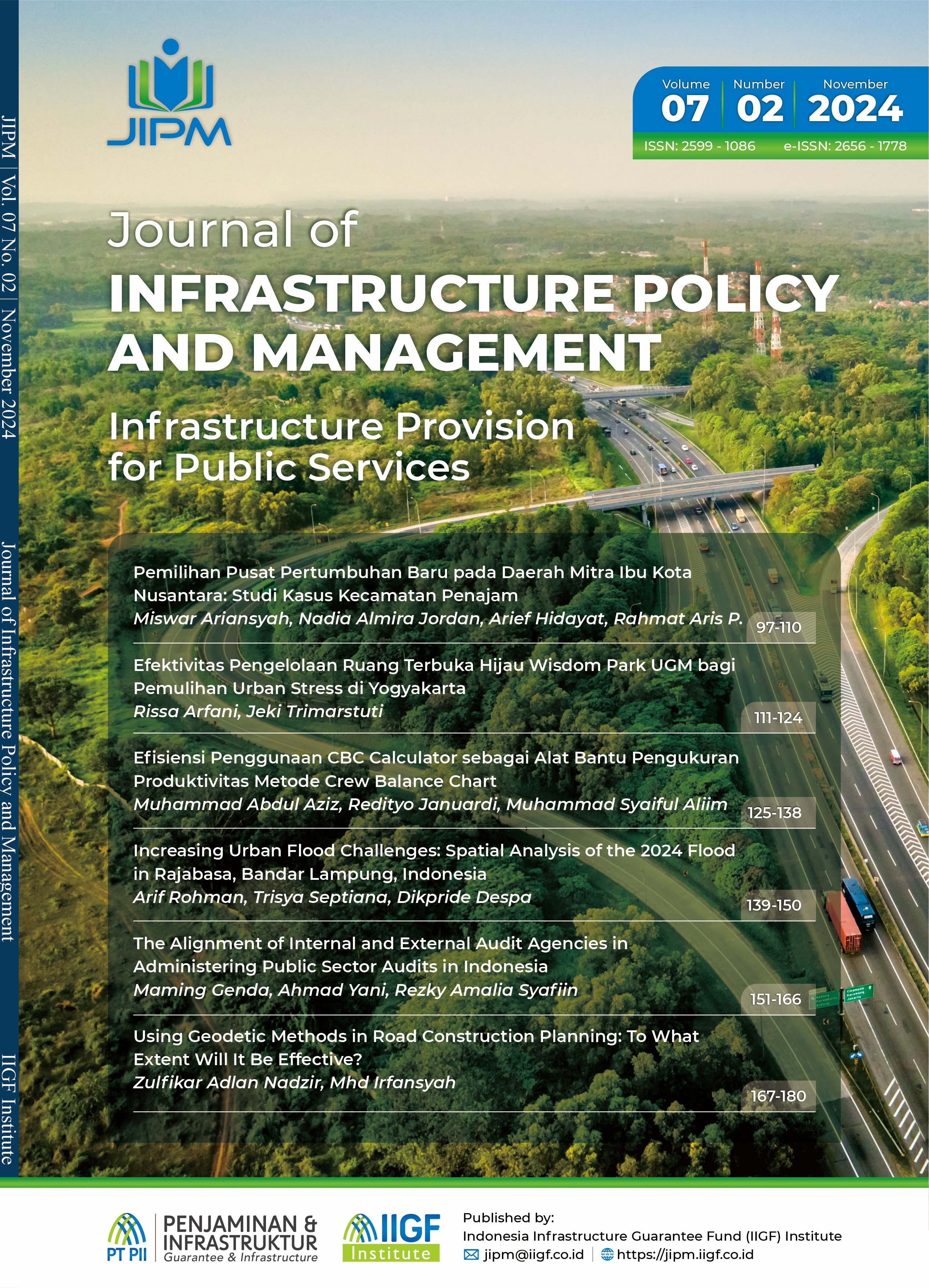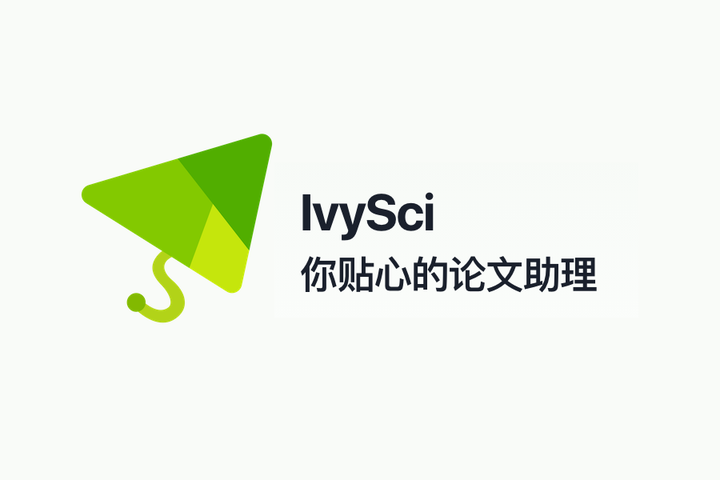Increasing Urban Flood Challenges: Spatial Analysis of the 2024 Flood in Rajabasa, Bandar Lampung, Indonesia
DOI:
https://doi.org/10.35166/jipm.v7i2.56Keywords:
Curve number, Spatial analysis, Urban floodAbstract
This study explores the spatial analysis of flood-prone areas in Rajabasa by utilizing Digital Elevation Model data from DEMNAS and high-resolution aerial photographs obtained via commercial drones. The research aims to understand the region’s flood dynamics and watershed characteristics. The elongated shape of the Rajabasa basin, with a calculated circularity ratio (Rc) of 0.19, indicates that runoff follows the existing stream network, resulting in gradual and prolonged flood events. Field surveys were conducted to validate land cover data, revealing that the majority of the area was residential and classified under Hydrology Soil Group (HSG) D, leading to high Curve Number (CN) values between 88 and 93. These values suggest that nearly all rainfall converts to runoff, exacerbating flooding conditions. Effective flood management strategies were proposed by focusing on areas with the highest CN values and integrating long-term land improvement with short-term flood control infrastructure. The study also highlights the importance of preserving natural drainage lines, which are often overlooked, for enhancing flood mitigation, educating residents about floodplain management, and implementing proper land use regulations. The findings underscore the necessity of combining spatial analysis, high-resolution data, and targeted flood management strategies to mitigate flood risks in Rajabasa and similar flood-prone areas.
References
Areu-Rangel, O. S., Cea, L., Bonasia, R., & Espinosa-Echavarria, V. J. (2019). Impact of urban growth and changes in land use on river flood hazard in Villahermosa, Tabasco (Mexico). Water (Switzerland), 11(2), 304–318. https://doi.org/10.3390/w11020304
BNPB. (2024). Infografis bencana tahun 2023. https://bnpb.go.id/infografis/infografis-bencana-tahun-2023
Carver, S., Comber, A., McMorran, R., & Nutter, S. (2012). A GIS model for mapping spatial patterns and distribution of wild land in Scotland. Landscape and Urban Planning, 104(3), 395–409. https://doi.org/https://doi.org/10.1016/j.landurbplan.2011.11.016
Dang, A. T. N., & Kumar, L. (2017). Application of remote sensing and GIS-based hydrological modelling for flood risk analysis: A case study of District 8, Ho Chi Minh city, Vietnam. Geomatics, Natural Hazards, and Risk, 8(2), 1792–1811. https://doi.org/10.1080/19475705.2017.1388853
detik.com. (2024). Bandar Lampung kembali terendam banjir, warga pertanyakan kerja pemerintah. https://www.detik.com/sumbagsel/berita/d-7289753/bandar-lampung-kembali-terendam-banjir-warga-pertanyakan-kerja-pemerintah
El Alfy, M. (2016). Assessing the impact of arid area urbanization on flash floods using GIS, remote sensing, and HEC-HMS rainfall-runoff modeling. Hydrology Research, 47(6), 1142–1160. https://doi.org/10.2166/nh.2016.133
Feng, Q., Liu, J., & Gong, J. (2015). Urban flood mapping based on unmanned aerial vehicle remote sensing and random forest classifier: A case of Yuyao, China. Water, 7(4), 1437–1455. https://doi.org/10.3390/w7041437
Geospatial Information Agency. (2018). Seamless Digital Elevation Model (DEM) dan batimetri nasional. https://tanahair.indonesia.go.id/demnas/#/
Gigović, L., Pamučar, D., Bajić, Z., & Drobnjak, S. (2017). Application of GIS-interval rough AHP methodology for flood hazard mapping in urban areas. Water (Switzerland), 9(6), 1–26. https://doi.org/10.3390/w9060360
Gregory, K. J., & Walling, D. E. (1973). Drainage basin form and process: A geomorphological approach. Halsted Press.
Hallegatte, S., Green, C., Nicholls, R. J., & Corfee-Morlot, J. (2013). Future flood losses in major coastal cities. Nature Climate Change, 3(9), 802–806. https://doi.org/10.1038/nclimate1979
Hanson, S., Nicholls, R., Ranger, N., Hallegatte, S., Corfee-Morlot, J., Herweijer, C., & Chateau, J. (2011). A global ranking of port cities with high exposure to climate extremes. Climatic Change, 104(1), 89–111. https://doi.org/10.1007/s10584-010-9977-4
Kusratmoko, E., Marko, K., & Elfeki, A. (2016). Spatial modelling of flood inundation case study of Pesangggrahan ploodplain, Jakarta, Indonesia. Journal of Geography, Environment, and Earth Science International, 5(3), 1–10. https://doi.org/10.9734/jgeesi/2016/23524
lampost.co. (2024). Hujan deras, kelurahan Rajabasa kembali terendam banjir. https:// lampost.co/lampung/bandar-lampung/hujan-deras-kelurahan-rajabasa-kembali-terendam-banjir/
mediaindonesia.com. (2024). Puluhan rumah di kelurahan Way Halim kebanjiran hingga 2 meter. https://mediaindonesia.com/nusantara/654307/puluhan-rumah-di-kelurahan-way-halim-kebanjiran-hingga-2-meter
radarlampung.disway.id. (2024). Usai hujan lebat, parkiran RS Urip Sumoharjo Bandar Lampung terendam, kondisinya sampai begini. https://radarlampung.disway.id/read/690220/usai-hujan-lebat-parkiran-rs-urip-sumoharjo-bandar-lampung-terendam-kondisinya-sampai-begini
Rohman, A., Comber, A., & Mitchell, G. (2019). Evaluation of natural flood management using curve number in the Ciliwung basin, West Java. AGILE, 2018, 2–5. https://agile-gi.eu/images/conferences/2019/documents/posters/116_Upload_your_PDF_file.pdf
Rohman, A., & Prasetya, D. B. (2019). Rapid mapping for simple flood mitigation using commercial drone at Way Galih village, Lampung, Indonesia. Forum Geografi, 33, 101–113. https://doi.org/10.23917/forgeo.v33i1.842
Satheeshkumar, S., Venkateswaran, S., & Kannan, R. (2017). Rainfall–runoff estimation using SCS–CN and GIS approach in the Pappiredipatti watershed of the Vaniyar sub basin, South India. Modeling Earth Systems and Environment, 3(1), 24. https://doi.org/10.1007/s40808-017-0301-4
Sayers, P., Galloway, G., Penning-Rowsell, E., Yuanyuan, L., Fuxin, S., Yiwei, C., Kang, W., Le Quesne, T., Wang, L., & Guan, Y. (2015). Strategic flood management: Ten ‘golden rules’ to guide a sound approach. International Journal of River Basin Management, 13(2), 137–151. https://doi.org/10.1080/15715124.2014.902378
Tutur, Army, E. K., & Rohman, A. (2022). Morphometry analysis of Sedayu mountainous catchment areas from detailed aerial photos. IOP Conference Series: Earth and Environmental Science, 1047(1), 012014. https://doi.org/10.1088/1755-1315/1047/1/012014
UNDRR. (2020). UNDRR. UN Annual Report, October.
USDA. (1986). Urban hydrology for small watersheds, TR-55. https://www.nrcs.usda.gov/Internet/FSE_DOCUMENTS/stelprdb1044171.pdf
Wahlström, M. (2015). New Sendai framework strengthens focus on reducing disaster risk. International Journal of Disaster Risk Science, 6(2), 200–201. https://doi.org/10.1007/s13753-015-0057-2
Downloads
Published
Issue
Section
License
Copyright (c) 2024 Journal of Infrastructure Policy and Management (JIPM)

This work is licensed under a Creative Commons Attribution-ShareAlike 4.0 International License.















